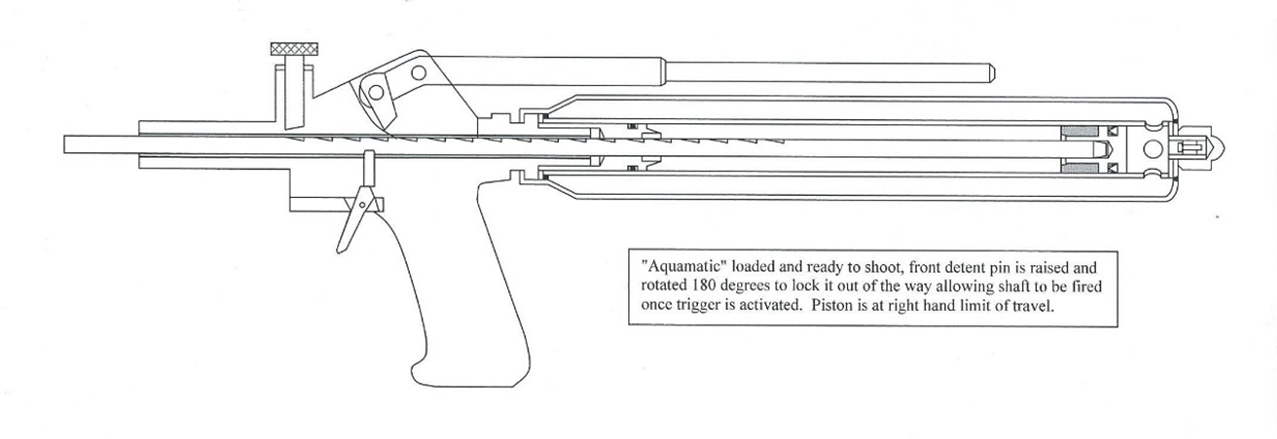The brothers, George and Trevor Davies, pioneered spearfishing in the Newcastle area taking up the sport in 1946. They were certainly talented and inventive. They made facemasks from car tyre inner tubes, started the Newcastle Neptune’s Spearfishing Club, made one of Australia’s first Scuba sets and designed the Aquamatic pneumatic speargun.
Trevor was the inventor and designer, George the engineer. They experimented with several speargun designs and during 1948 the design principles of the Aquamatic were conceived by Trevor and then further refined by George during the next five years.
Over this period every minute of the brother’s spare time was put to use with exhaustively testing and refining the gun, experimenting with it until George was satisfied, proclaiming “This speargun is, without fear of contradiction, the most powerful in the world”.
On new years eve of 1960 Trevor was killed in a tragic accident when, whilst filling a cylinder with air, a water trap on the compressor exploded, spraying jagged fragments of metal over a wide area.

L'Aquamatic Pneumatic
The first Aquamatics produced had a two inch diameter cylinder with a one inch bore and when charged to 359 PSI of pressure contained 45 cubic inches of compressed air. Later the cylinder was changed to one made of stainless steel, one inch in diameter with a one half inch bore. This cylinder, when fully compressed by the spear contained about 1800 PSI.
The gun has an overall length of twenty two inches, with the barrel extending eighteen inches behind the handle.
The gun’s barrel was made to take any one of three spear shaft sizes of either five sixteenths of an inch, three eighths of an inch or seven sixteenths of an inch in diameter. Spears were usually 54 inches (four and one half feet) long with 23 loading notches.
To load the gun the trigger is depressed and the spear, with notches facing upward, is pushed into the barrel until it contacts the piston. The lever is then raised and lowered with a pawl engaging the notches and using a ratchet action forces the spear into the cylinder.
The nose of the aquamatic has a line discharge attachment clamped to it. The line is attached to the spear and wound around the rear movable arm and forward to the fixed arm. This is repeated several times with the other end of the line terminating at a reel.

L'Aquamatic caricato e pronto per sparare. iI perno di arresto anteriore deve essere sollevato e ruotato di 180 gradi
per bloccarlo e consentire il lancio della freccia prememdo il grilletto

Aquamatic dopo il lancio della freccia: il pistone dell'ammortizzatore poggia contro il fermo
all'estremità sinistra del cilindro pneumatico
The air in the cylinder lasts indefinitely. The gun has been used continuously for twelve months without any loss of pressure. When fired there is no explosion underwater and no discharge of bubbles as in a CO2 gun. It has tremendous power, propelling a spear for 350 ft out of the water. Its spear, with the head removed, can penetrate two inches of seasoned hardwood.
George considered the main essentials for a speargun were power, accuracy, manoeuvrability, balance, reliability and durability and believed the Aquamatic encompassed all of these traits.
Fifty to sixty Aquamatics were made, with most being sold in and around the Newcastle area. Dick Charles, the founder of the USFA bought one and one was sent to America, however it was never paid for, the purchaser denying ever receiving it. Later a similar gun was produced and sold in the USA as the “Airmatic”
____________